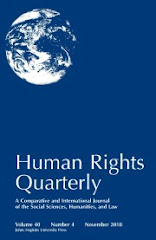The jus ad bellum—the international regime that governs cross-border force—is an enigma. The regime is foundational to the global order and has been remarkably resilient over time. And yet, it is deeply discordant, even incoherent, in its operation. A few use of force norms are settled and robust. Although states occasionally deviate from these norms, the deviations are widely viewed and treated as legal violations. Other use of force norms are noticeably more compromised. Operations that stray from these norms are still perceived to be unlawful, but such operations might be tolerated or even supported in practice. Still other norms are highly contested. The norms’ substantive content is so openly and heatedly debated that the credibility of the entire regime has been called into question.
To the extent that the legal literature accounts for these features of the regime, it reverts to claims about what the law is or should be. This approach treats the disharmony in the jus ad bellum as either a function of the law’s ambiguity or evidence of states’ lawlessness—and thus as a problem to be solved. But the approach requires suppressing the very tensions and inconsistencies that shape the regime’s day-to-day operation. It therefore cannot account for how the regime actually works. And it has limited practical value to analysts who must plan for different eventualities, anticipate how varied actors will engage with the regime in concrete cases, or assess the impact of particular decisions on the regime’s long-term viability.
This Article takes a different approach. It aims not to advance a particular position on the content of the law but rather to present a positive theory that explains how the regime actually operates and why. What accounts for the combined resilience and disharmony of this regime? Why do different norms on the use of force display such varied characteristics? And how are specific norms likely to be invoked or applied in any given case? We argue that the regime on the use of force is constituted by two fundamentally different and competing visions of the legal order—two codes. Each code has its own substantive policies, decisionmaking processes, and key advocates. The way in which the two codes’ advocates interact in any given context determines whether and how particular use of force norms are articulated, invoked, or applied. Only by uncovering the two codes—and assessing their interactions—can we appreciate why the regime operates as it does.
Thursday, January 7, 2016
Hakimi & Cogan: The Two Codes on the Use of Force
Monica Hakimi (Univ. of Michigan - Law) & Jacob Katz Cogan (Univ. of Cincinnati - Law) have posted The Two Codes on the Use of Force (European Journal of International Law, forthcoming). Here's the abstract:





